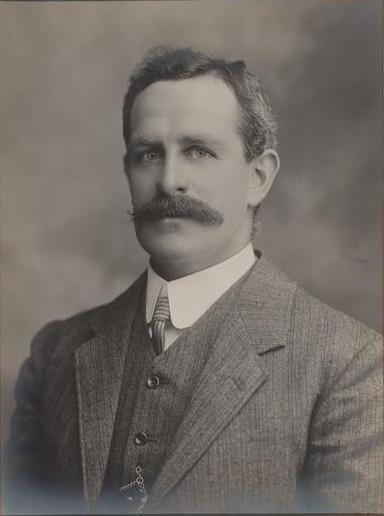- Frank Tudor
Infobox Officeholder
honorific-prefix = Hon.
name = Frank Tudor
honorific-suffix = MP
imagesize =
small
caption =
order = 6th Leader of the Opposition
term_start = 1916
term_end = 1921
deputy =T. J. Ryan
predecessor =Billy Hughes
successor =Matthew Charlton
order2 = Minister for Trade and Customs
term_start2 = 1908
term_end2 = 1916 (intermittently)
deputy2 =
constituency_MP3 = 2nd Member for Yarra in the Australian Parliament
term_start3 = 1901
term_end3 = 1921
predecessor3 = "first"
successor3 =James Scullin
birth_date = birth date|1866|1|27|df=yes
birth_place =Williamstown, Victoria
death_date =10 January 1922 (age 55)
death_place =Richmond, Victoria
nationality =Australia n
party =Australian Labor Party
spouse = Fanny Jane Mead
relations =
children =
residence =
alma_mater =
occupation = Felt hatter, politician
profession =
religion =
website =
footnotes =Francis Gwynne Tudor (
29 January 1866 —10 January 1922 ) was anAustralia n-born felt hatter and politician. He was the leader of theAustralian Labor Party from 1916 to 1921.Early life
Tudor was born to John Llewellyn Tudor, a ballastman, and Ellen Charlotte, née Burt, both of Welsh origin, on
29 January 1866 atWilliamstown, Victoria . However, the family soon moved to Richmond, where Tudor lived all his life.cite web
first= Janet
last=McCalman
title =Tudor, Francis Gwynne (Frank) (1866 - 1922)
publisher =Australian National University
work=Australian Dictionary of Biography
url =http://www.adb.online.anu.edu.au/biogs/A120315b.htm
accessdate = 2007-06-01]Upon leaving Richmond Central State School, and after short spells in a
sawmill and aboot factory, Tudor entered the felthat industry, which he developed a passion for. Tudor apprenticed in Abbotsford and then travelled across Victoria in the hat trade. Tudor went to England, working inLondon ,Birmingham ,Liverpool andManchester , marrying Alice Smale in Denton, Lancashire in 1894. Smale died the same year, however Tudor continued in the felt hat trade by moving to London and becoming vice-president of the local branch of the Felt Hatters' Union. In 1897 Tudor remarried to Fanny Jane Mead.As vice-president of the union Tudor became interested in union politics (as many Labor politicians were before their entry into politics) and persuaded the British unions to adopt the
union label principle. Returning to Australia, Tudor worked at Abbotsford's mills and took a seat in theVictorian Trades Hall Council . In 1900 he became president.Entry into politics
A prominent figure in Richmond, Tudor turned the
Division of Yarra into the safest Labor seat in the country by winning that seat by a large margin in the 1901 federal election. Tudor was a deacon of the Congregational Church and angered someProtestant s with his calls forHome Rule forIreland .Tudor was immediately elected the Labor Party whip and assistant secretary. He ascended to the position of secretary in 1904, then Minister for Trade and Customs during the three Fisher ministries, from 1908-1909, 1910-1913, 1914-1915.cite web|url=http://www.alp.org.au/people/tudor_frank.php|title=Australian Labor Party: The Hon Frank Tudor|publisher=Australian Labor Party|author=National Archives of Australia|accessdate=2008-01-02] When
Billy Hughes replacedAndrew Fisher as thePrime Minister of Australia , Tudor continued in the role of Minister for Trade and Customs until 1916, when he resigned from the Hughes ministry over his opposition toconscription .However, Hughes himself left the Labor Party at the end of 1916 to form the Nationalist Party.cite web|url=http://www.firstworldwar.com/bio/hughes.htm|title=First World War - Who's Who - Billy Hughes|publisher=FirstWorldWar.com|author=Michael Duffy|accessdate=2008-01-02]
Leader of the Opposition
Tudor was elected leader of the
Australian Labor Party (and consequently Leader of the Australian Opposition) in November 1917, and led his party to defeat in the 1917 federal election, however Tudor's success in preventing conscription was evident when a plebiscite was held and defeated in 1916.In 1919
T. J. Ryan , thenPremier of Queensland was transferred to federal politics to serve under Tudor as a deputy. Because of Tudor's incompetence, the party sought a new leader, and Ryan would have probably replaced Tudor if he had not died in 1921, leaving Tudor without a deputy.Tudor was a quiet leader who did not intimidate the Hughes' government and was not considered a strong contender in the 1919 election. These predictions were correct and Labor was defeated again. In 1921 Tudor's health declined and was increasingly unable to fulfill his duties, however the party did not allow him to resign. Tudor died on 10 January 1922, becoming the first leader of the Labor Party to die 'in office'.
References
Persondata
NAME = Tudor, Francis Gwynne
ALTERNATIVE NAMES =
SHORT DESCRIPTION =Australia n politician and leader of the Labor Party
DATE OF BIRTH =27 January 1866
PLACE OF BIRTH =Williamstown, Victoria
DATE OF DEATH =10 January 1922
PLACE OF DEATH =Richmond, Victoria
Wikimedia Foundation. 2010.
